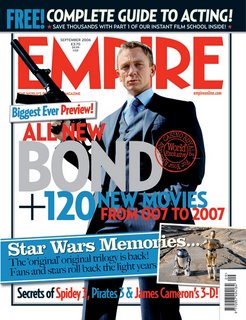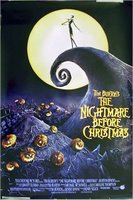The Guardian - Tories reveal plans for green tax hike on air travel
http://observer.guardian.co.uk/politics/story/0,,2031199,00.html
Consance: readers who are on a more right-wing side of politics would take an interest in this story.
Continuity: this story could go on and develop
Threshold: the event is big as it affects people who fly and particularly frequent air flyer's.
The Mirror - EXCLUSIVE: THE BIG BROTHER COVER-UP
http://www.mirror.co.uk/news/topstories/tm_headline=exclusive%2D-the-big-brother-cover%2Dup%26method=full%26objectid=18732760%26siteid=89520-name_page.html
Threshold: at the time the event was huge, was channel 4 right to show this "bullying" in order to gain more audience figures? was Shetty actually bullied?
Continuity: This article suggests this is the end of the Big Brother racism, however, this news has been on-going since the incident.
Reference to elite persons: the news is about Jade Goody, who's claim to fame was in fact Big Brother....good for her.
The Independent - Blair is called to account over abandoned troops
http://news.independent.co.uk/uk/politics/article2347521.ece
Personalisation: The article suggests that it is Blair's fault soldiers who suffer from a mental illness after being in Iraq are not getting any help
Reference to elite persons: Blair..its his fault, or so they say.
Composition: the journalist is making Blair look bad.
The Sun - Poor at gates of Liz wedding
http://www.thesun.co.uk/article/0,,2-2007110503,00.html
Reference to elite persons: Its celeb gossip news, Liz Hurley's wedding.
Consonacne: The news is from a tabloid paper which therefore will appeal to the target audience.
Continuity: "The epic week-long wedding", it was probably reported all week.
Personalisation: refers to Liz Hurley's wedding to Arjun Nayar.
The News of the World - "I just cant wait until i never have to see your face again" (Paul's phone rants at Heather)
http://www.newsoftheworld.co.uk/story_pages/news/news1.shtml
Reference to elite persons: the news is about celebrity couple who are in the middle of a divorce.
Threshold: In a way the even is big as Heather backs out of her "bitter divorce battle" and is settling for money and property.
Conconance: The article is written in a soap-opera way, which appeals to the working class readers of the paper.
Continuity: The story has been reported since the divorce began, it lost its appeal as it dragged on, but the settlement has made it something to report once again.




 Auteur Theory
Auteur Theory